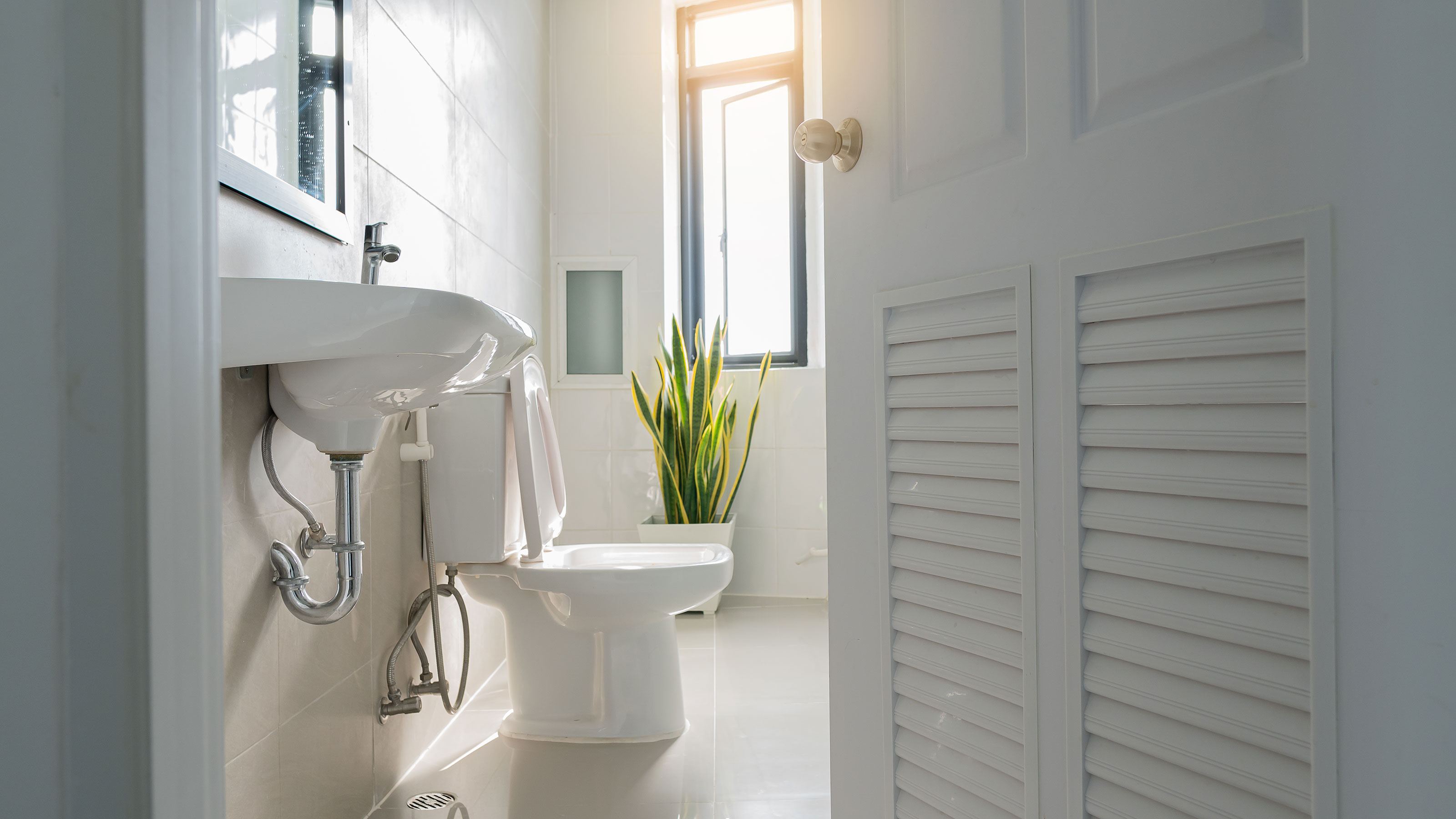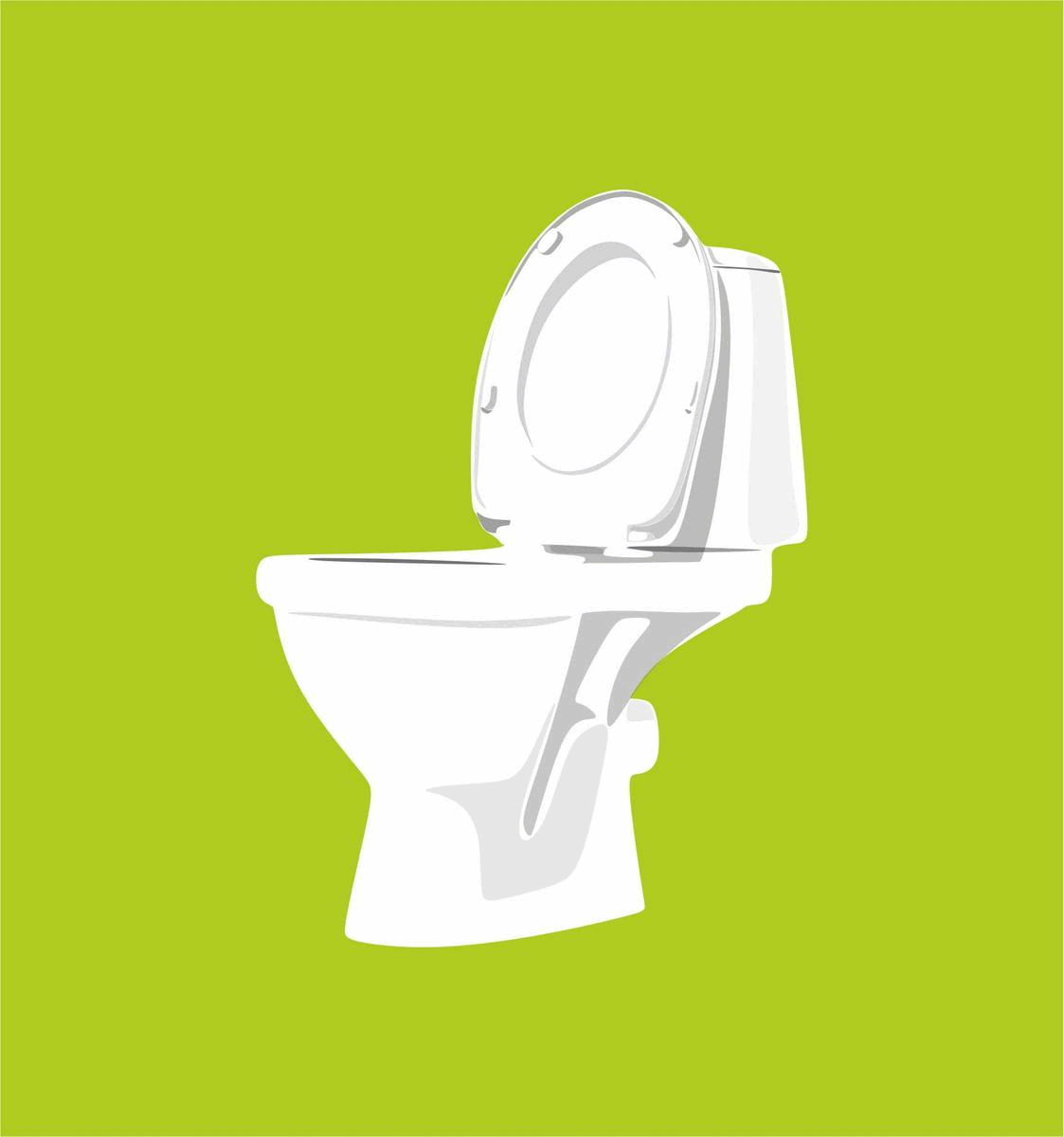9 ways to unclog a toilet without a plunger
These methods for how to unclog a toilet without a plunger are recommended by professional plumbers so that you won't need to stress or break a sweat.

Need to know how to unclog a toilet without a plunger? We've all been there. An overflowing toilet is one of the most unpleasant and stressful plumbing problems you'll face. Fortunately, though, it's also typically easy to fix yourself without needing to call out a plumber and half the time you won't need to break a sweat.
Learning how to unclog a toilet is something that most people can master and it shouldn't require any specialist tools, although a plunger and/or plumbing snake are always useful to have somewhere in your toolbox just in case. However, even if you don't have one, or anything in your home that seems suitable, you can unblock a toilet without tools in a few simple steps using what you already have in your kitchen cupboard. Here's how.
How to unclog a toilet without a plunger
Fortunately, there is more than one way to fix this common plumbing issue even without a plunger. Allison Harrison, co-owner of Goodbee Plumbing, a plumbing company serving the greater New Orleans area, tells us that 'There are several workarounds if you need to unclog a toilet but don’t have a plunger. Some popular methods include using dish soap to lubricate the clogged pipe or pieces of a cut up hand soap, using hot, but not boiling water, using a wire hanger as a snake to prod the debris, or using a baking soda and vinegar mixture.'
Here's how to use these methods in a bit more detail.
1. Try dishsoap or shampoo
This is the simplest method that works with most smaller clogs. Essentially, you're trying to get whatever is clogging your toilet to stick to a thick, lubricating substance. Harrison advises starting with 'dish soap or even shampoo. Then add in a gallon of hot water and then try flushing.'
Never use boiling water, as it can crack the porcelain. This same procedure can be used if your toilet is overflowing and you do not have a plunger.'

2. Use bleach
If dish soap and hot water didn't do the trick, you will have to bring out the bleach. Pour no more than one cup of bleach into your toilet 'followed by powdered dishwashing soap. Again, be sure to wait 10 minutes before flushing.'
Get small space home decor ideas, celeb inspiration, DIY tips and more, straight to your inbox!
Bear in mind that 'this method is very harsh on pipes, so only use it when necessary.'
3. Use a wire coat hanger
An old method that still works at a pinch, the coat hanger unblocking method is great if you really need to get in deep to unclog a toilet and nothing else will work. 'first, unravel the hanger and wrap one end with a rag and taping it to keep it in place. Next, push the covered end into the toilet and work to remove whatever is clogging the drain.'
Top tip: Don't use this method for overflowing toilets as you could seriously mess up your entire bathroom with the overflowing water going everywhere.
4. Try cling film
This is a lesser-known toilet-unclogging method that can work well for toilets with high water. Tom Drake, bathroom expert at Tap Warehouse, suggests the following steps:
1. First, dry out the top of the toilet using paper towels. You might want to wear a pair of gloves for this!
2. Next, add 3 layers of cling film to the top of your toilet. You'll need to press the cling film down fairly firmly in order to create a seal.
3. You can now flush the toilet. At this point, the pressure caused by the flush should cause the cling film to balloon upwards.
4. Push down gently on the ballooned cling film. This will reverse the suction caused by the flush which should dislodge the blockage in a similar way to a plunger.

5. Use baking soda and vinegar
Still no luck, or don't have any bleach? We often use vinegar and clean with baking soda, they are so handy to keep in your cupboard. Drake advises pouring 'half a cup of baking soda into the toilet bowl followed by half a cup of white vinegar. Next, pour two liters of hot (not boiling) water to help aid the reaction.
'Leave the mixture to work for 30 minutes and come back to check if the level of the water has returned back to normal. If it has, the blockage has cleared and you can flush it as normal.'
6. Get hands-on
If you've tried hot water and flushed the toilet once but the blockage has remained, your next option should be to don rubber gloves and see if you can deal with the blockage by hand. That might range from hooking out the toy your child has stuffed down there to lifting out excessive clumps of toilet paper they've used into a waiting plastic bag. We hate to say it, but it might also mean taking an old knife to a large (let's call it 'organic', sounds better) deposit and slicing it up a little. Try the flush again, and keep your fingers crossed.
7. Try caustic soda (with caution)
To unblock a toilet with caustic soda, ensure your eyes and hands are protected as it can extremely damaging if it comes into contact with either. Then pour the caustic soda into the toilet bowl, leave for two minutes (but always check the manufacturer's instructions for full details). Follow with a bucket of hot water from the kettle or hot tap. Flush the toilet, then give it a clean.
8. Unblock a toilet with water pressure
If all of the above fail to work, you could try breaking up the blockage using water pressure. For this you will need a pressure washer and a pipe cleaning kit to connect to it. Insert the hose into the toilet bowl, switch on the pressure washer and you will see the hose will be pulled down the pipe until it reaches the blockage. If the blockage can be broken down, the water pressure will do this. Again, don't do this if you have a toilet with a macerator – it might be that the toilet is not blocked, just won't flush because there's something caught around the mechanism.
9. Use a toilet snake
Jake Romano, Project Manager at Mississauga, Ontario's John The Plumber recommends using a 'Toilet snake (aka toilet auger)' as an alternative method to unclogging the toilet with a plunger. 'You stick the long coil into the drain and maneuver it through the toilet to dislodge whatever is stuck. Some toilet snakes are 3', and can maneuver through only the toilet – while others are 6' and can manoeuvre through the toilet and the first bit of toilet drains.'
He says that 'if you're uncomfortable at this step, call a professional drain cleaner. What you need to do is unbolt the toilet, remove it, use drain cleaning equipment, clear the blockage, replace the wax seal, and reinstall the toilet. It's a bit of a process, but this will almost always fix a blockage.'
The RIDGID K-3 3-Foot Toilet Auger Snake in stainless steel from Amazon is a good investment for this kind of job.
'Be very careful when inserting the snake into the toilet. It's super easy to scratch the porcelain,' he adds.
How do you unclog a toilet when water is high?
Harrison reminds homeowners that 'when trying to unclog a toilet when the water is high, be sure to first manually remove some water so that there is space for you to add in any other substances.' Avoid dumping chemicals down a toilet with high water as that could ruin your entire bathroom and even cause injury, especially if you are using bleach.
Does an overflowing toilet unclog itself?
That depends on the type of clog you have. Harrison explains that 'over time, a toilet will typically clear itself since most things that clog are water-soluble, but if it is not a water-soluble material, it will not fix itself.'
How can I unclog my toilet without a plunger or hot water?
See the wire coat hanger method if your toilet isn't overflowing. If it's overflowing, always remember to manually remove excess water first; then, go in with the bleach or vinegar.
Anna is a professional writer with many years of experience. She has a passion for contemporary home decor and gardening. She covers a range of topics, from practical advice to interior and garden design.